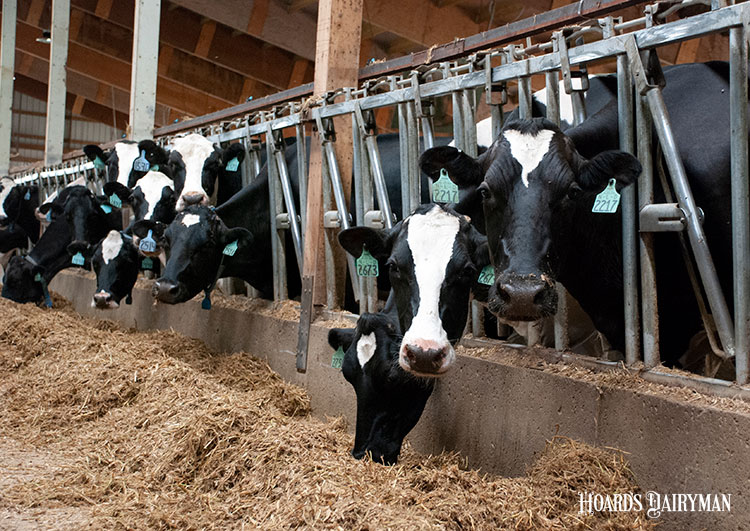
For ruminants such as dairy cattle, little is more important than maintaining rumen pH at a level that promotes fiber digestion and good rumen health. Research shows us that lower rumen pH is related to depressed milkfat, less de novo fatty acid synthesis, and even lower milk protein. In addition to lower solids-corrected milk yield, low rumen pH is associated with poor digestive efficiency, lameness, and variable feed intake patterns.
Research over the past few years has allowed us to prioritize the key feeding and management factors that contribute to lower rumen pH. The top three factors to focus on in order to optimize rumen pH are:
1. Formulate for proper ration fermentability
2. Do not overcrowd the feedbunk or stalls
3. Do not feed to an empty bunk
Feeding a diet that is too high in fermentable carbohydrates . . . such as starch . . . can result in rumen acidosis, and we have learned how to properly formulate rations to help avoid low rumen pH. But the reality is that we do feed highly fermentable diets to lactating cows, and so our attention must turn to management that allows the cow to respond optimally to these high-energy rations.
Cows need their stalls
Overcrowding the feedbunk often leads to slug feeding and other undesirable feeding behavior, and overcrowding the stalls impairs lying time and rumination while lying down – what we call recumbent rumination. Recent research at Miner Institute tells us that when cows are overcrowded, cows that manage to achieve 80% to 90% or more of their rumination in a stall have far less subacute rumen acidosis (rumen pH < 5.8) than cows that only achieve 50% or 60%. Cows that are forced by overcrowding to ruminate while standing may experience subacute acidosis for eight to 10 hours daily, which is well above the more typical three to four hours.
Overcrowding and empty bunks spell trouble
Another study at Miner Institute found that the combination of feeding to an empty bunk and overcrowding pushes subacute rumen acidosis to nine hours per day or more. So, if the goal is to avoid low rumen pH, focus on the ration, but don’t forget that overcrowding and restricted feed access can have as much, or even more, of a negative effect. The recipe for good rumen function is a properly formulated ration fed to cows that are not rushed while eating and have the freedom to lie down and ruminate.








